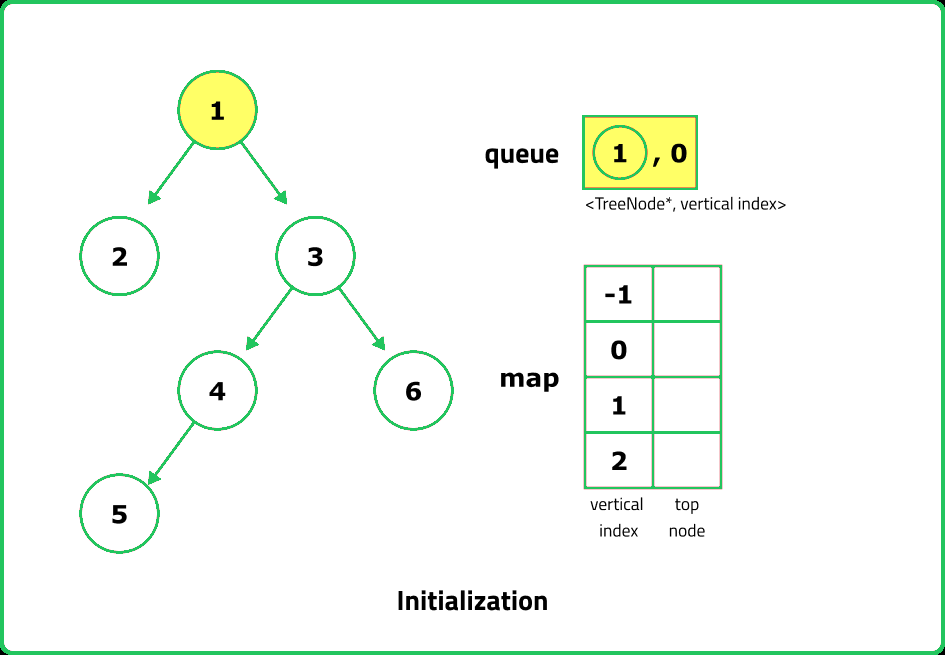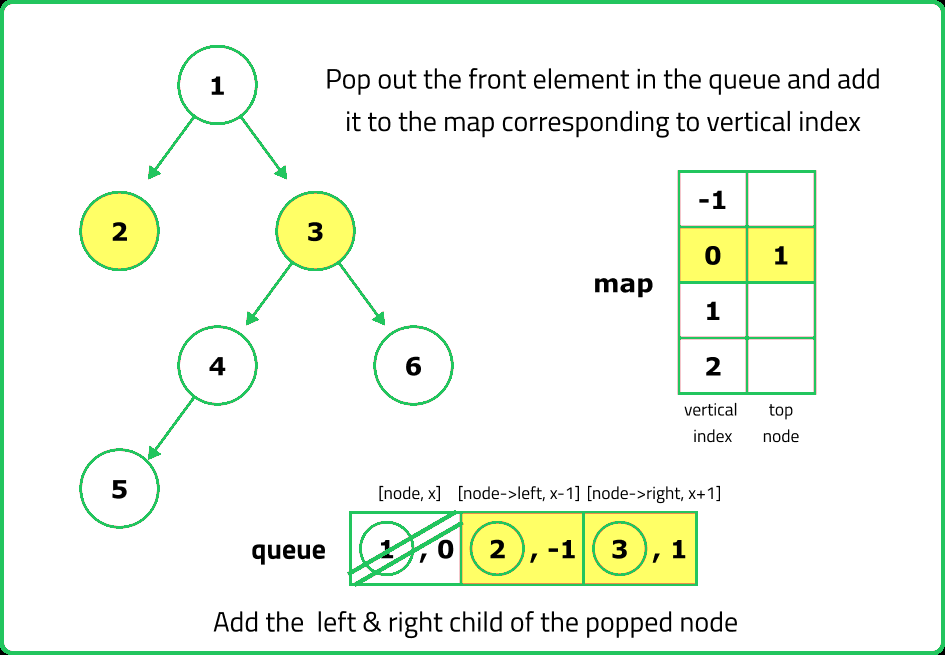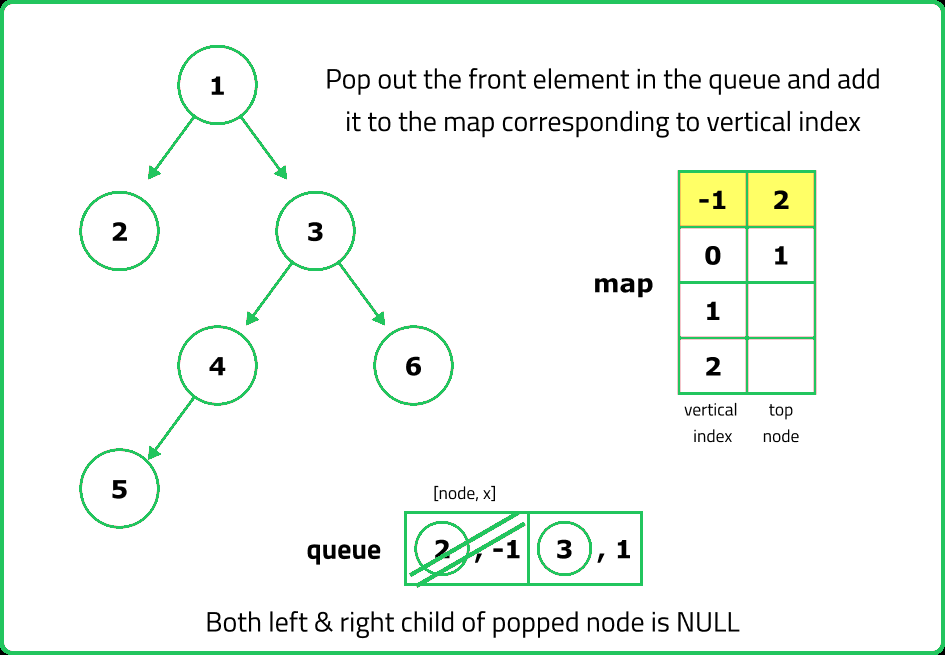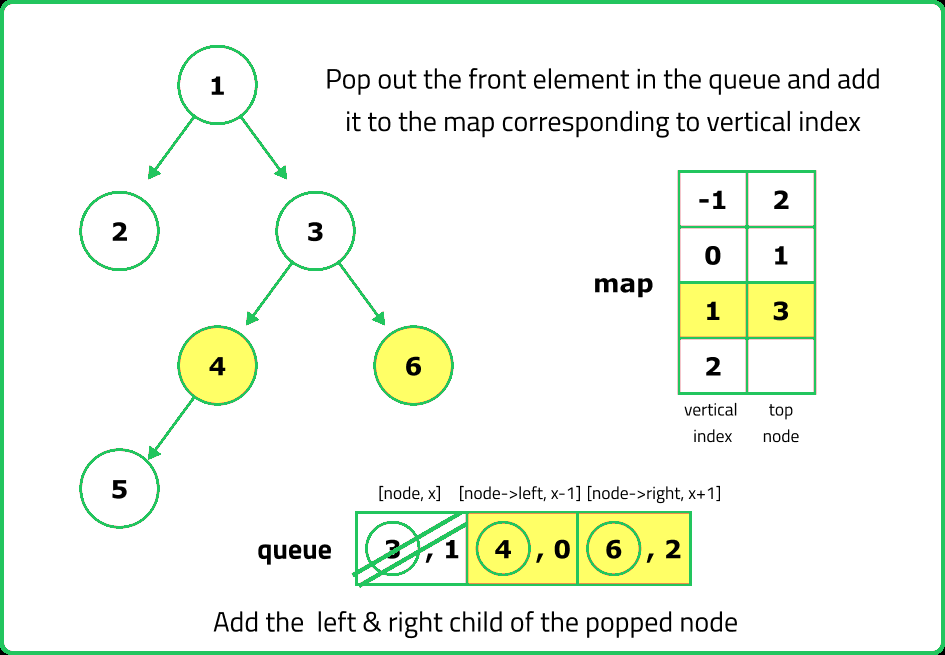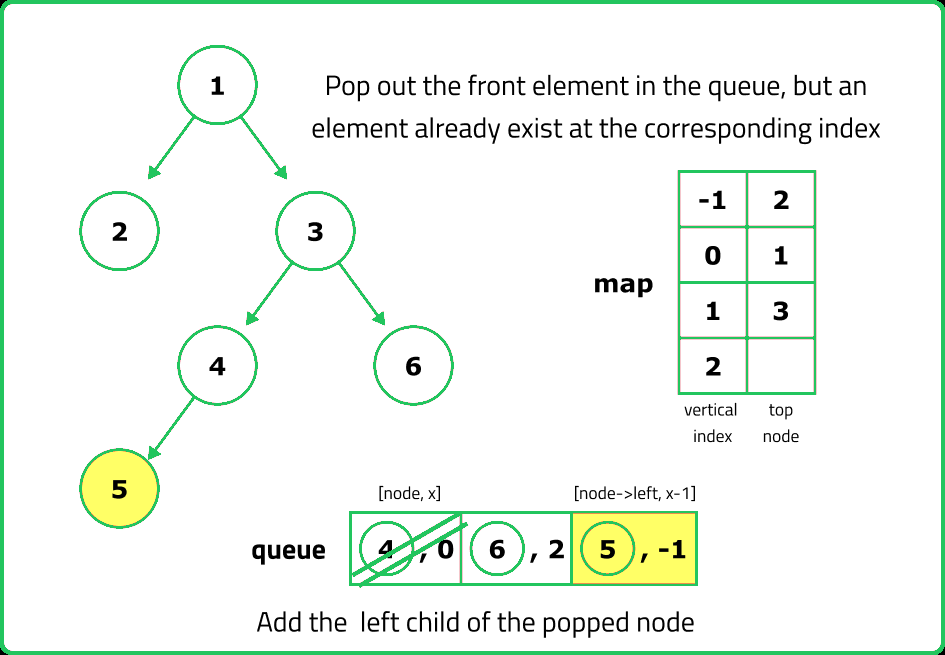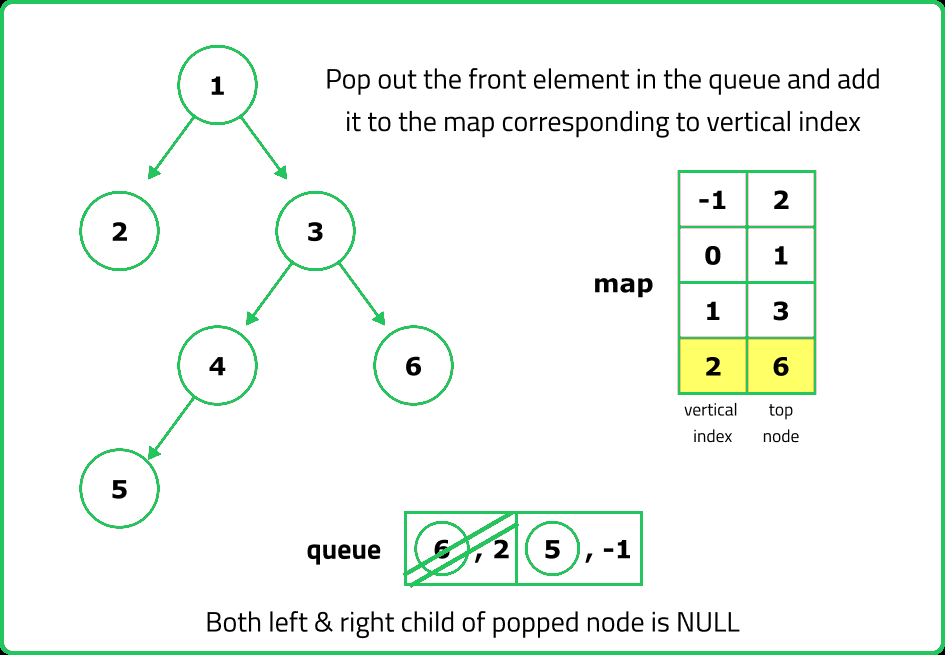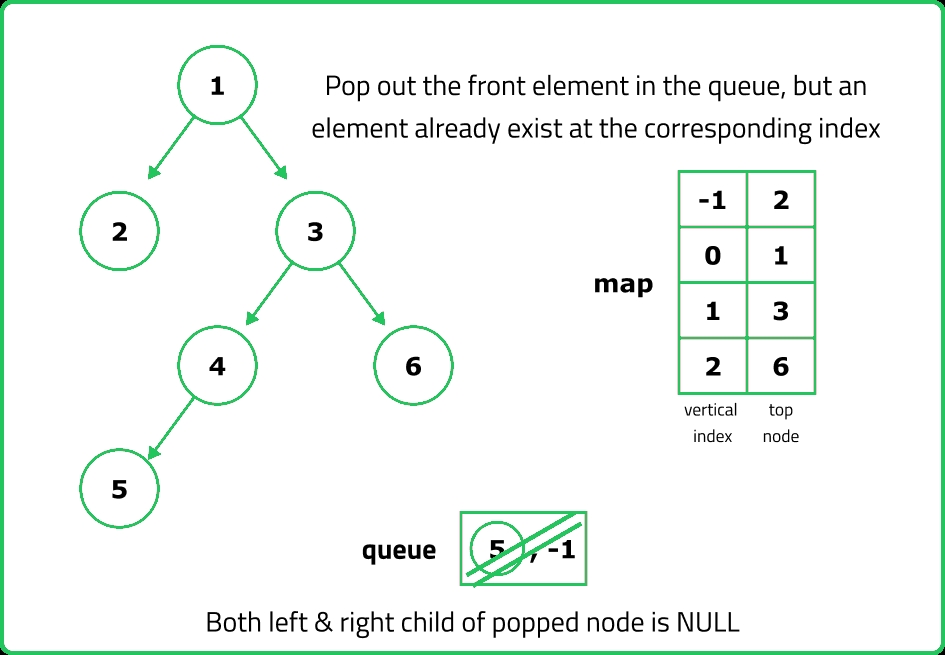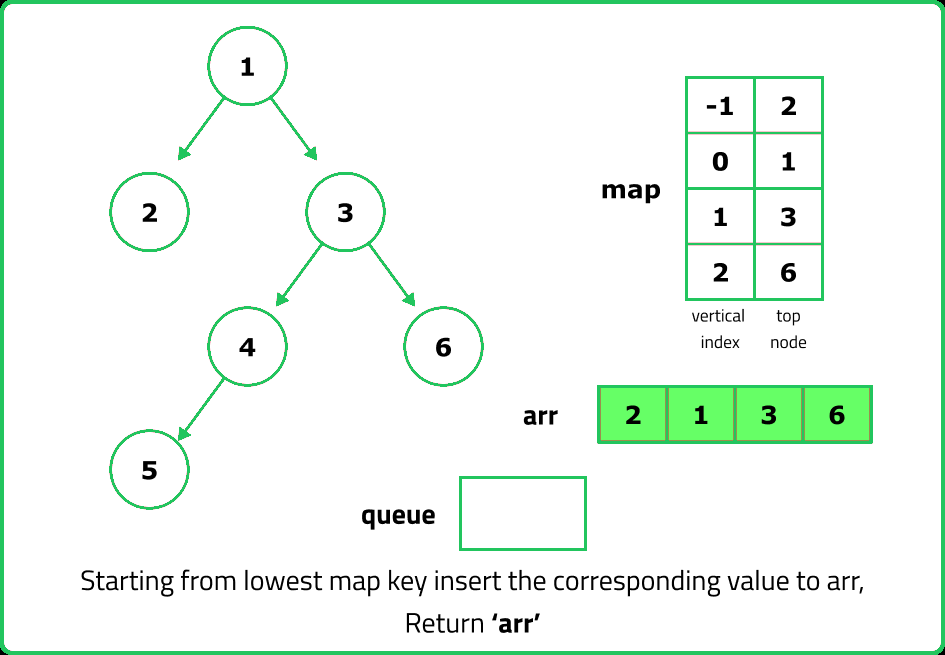Top View of BT
Binary Trees
FAQs
Medium
- Fun Fact: The underlying concept of this problem, which is traversing through a binary tree, is extensively used in databases as well as file systems
- For instance, the B-tree structure, a type of binary tree, allows for efficient insertion, deletion and search operations
- This is especially beneficial for databases and file systems where data is large and needs to be stored on the hard drive
- In cases like these, reducing the number of disk access during operations is crucial for the overall performance
- So, understanding how to traverse binary trees isn't just restricted to coding puzzles, but has very tangible real-world applications in software development!
Given the root of a binary tree, return the top view of the binary tree.
Top view of a binary tree is the set of nodes visible when the tree is viewed from the top. Return nodes from the leftmost node to the rightmost node. Also if 2 nodes are outside the shadow of the tree and are at the same position then consider the left ones only(i.e. leftmost).
Examples:
Input : root = [1, 2, 3, 4, 5, 6, 7]
Output : [4, 2, 1, 3, 7]
Explanation :
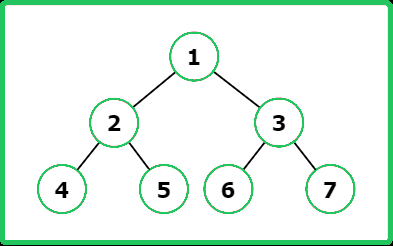
Input : root = [10, 20, 30, 40, 60, 90, 100]
Output : [40, 20, 10, 30, 100]
Explanation :
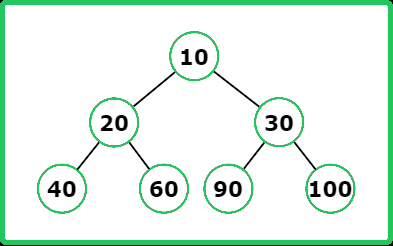
Input : root = [5, 1, 2, 8, null, 4, 5, null, 6]
Constraints
- 1 <= Number of Nodes <= 104
- -103 <= Node.val <= 103
Hints
- Use a queue of tuples (node, horizontal_distance), starting with (root, 0). Process each node level by level, ensuring that we encounter nodes in top-to-bottom order.
- Use a hashmap (top_nodes) where: Key: Horizontal Distance (HD). Value: First node encountered at that HD. If an HD is encountered for the first time, store the node’s value.
Company Tags
AMD
NVIDIA
Splunk
Zomato
Medtronic
Twilio
Instacart
Unity Technologies
Zoho
Pinterest
Flipkart
Epic Games
IBM
Cloudflare
eBay
Seagate Technology
Zynga
Bloomberg
Freshworks
Riot Games
Optum
JPMorgan Chase
Red Hat
Reddit
OYO Rooms
Google
Microsoft
Amazon
Meta
Apple
Netflix
Adobe

